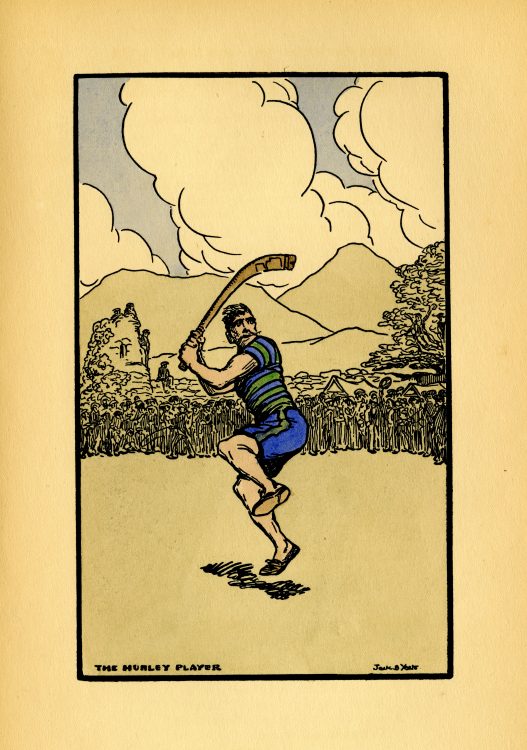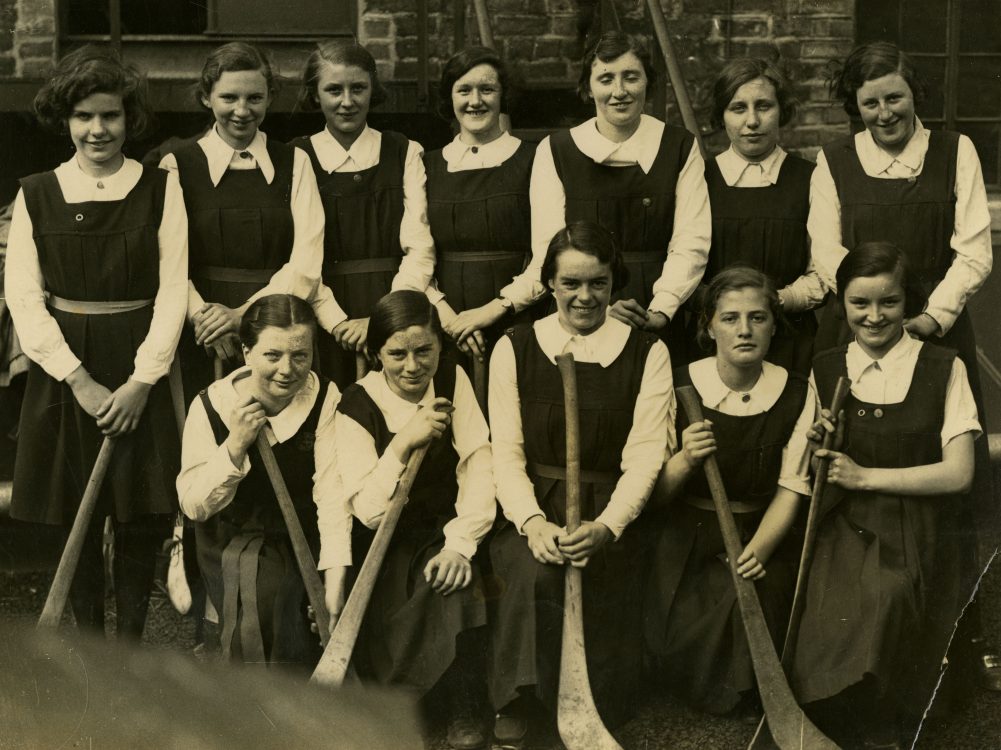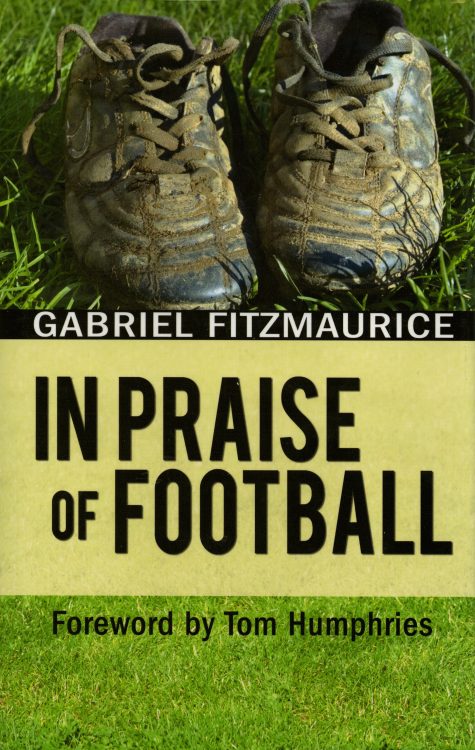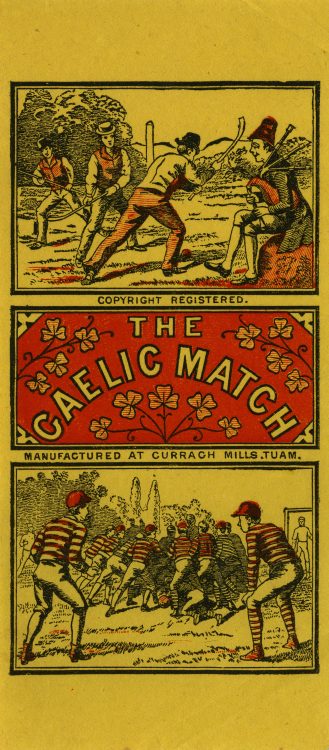The Gaelic Athletic Association (Cumann Lúthchleas Gael) was officially established 1884 by teacher Michael Cusack (1847-1906) and farmer and athlete Maurice Davin (1842-1927) as part of the Gaelic Revival and the effort to de-Anglicize Ireland. The GAA consolidated numerous sports clubs across Ireland and instituted formal rules and regulations. It has clubs in all 32 of Ireland’s counties.
The early GAA was bitterly anti-English: the playing of English sports in Ireland like cricket and rugby was not only imperialistic, but also emasculating. Many prominent nationalists became vocal patrons of the Association, including Charles Stewart Parnell, Michael Davitt, and Archbishop Croke of Cahel, whose letter of support to Cusack became the GAA’s unofficial charter:
Indeed, if we continue travelling for the next score of years in the same direction that we have been going in for some time past, contemning the sports that were practised by our forefathers, effacing our national features as though we were ashamed of them, and putting on, with England’s stuffs and broadcloths, her habits and such other effeminate follies as she may recommend, we had better at once, and publicly, adjure our nationality, clap hands for joy at sight of the Union Jack, and place ‘England’s bloody red’ exultingly above ‘the green’.
Croke Park in Dublin, headquarters of the GAA, was named in his honor.
Hurling is an ancient sport that is traced back to Irish myth and legend, most notably that of Cúchulainn. Cúchulainn is the central figure in the Ulster Cycle, stories detailing the deeds of heroes from the Kingdom of Ulster during the first century C.E. The Táin Bó Cúailnge (“The Cattle Raid of Cooley”) is Western Europe’s oldest tale told in the vernacular. It includes the story of Cúchulainn name (“the hound of Culain”) and features his legendary hurling skills.
Camogie (camógaíocht) is the women’s version of hurling. It is run under the auspices of An Cumann Camógaíochta (the Camogie Association), which was originally established in 1905. The women’s camán (hurley stick) is shorter than the men’s. Both hurling and camogie use a leather ball called a sliotar (pronounced “slither”), but the camogie sliotar is smaller.
Poet Gabriel Fitzmaurice (born 1952) honors County Kerry’s rich tradition of Gaelic football (peil Ghaelach orcaid). Historically, Kerry is the most successful football team in the GAA. The Kerry GAA branch was founded in 1888.
Tuam (Co. Galway) is known as one of Ireland’s oldest religious centers, with ruins dating to the sixth century C.E. It was also likely Ireland’s capital during the twelfth century. The Tuam Match Factory, situated along the Curragh River, was in operation during the latter half of the nineteenth century, and a series of its colorful matchbook covers featured scenes of hurling and Gaelic football teams. Advertised as “The Gaelic Match” and adorned with shamrocks, the matchbook covers appeal to Irish consumers encouraged to buy Irish goods.





